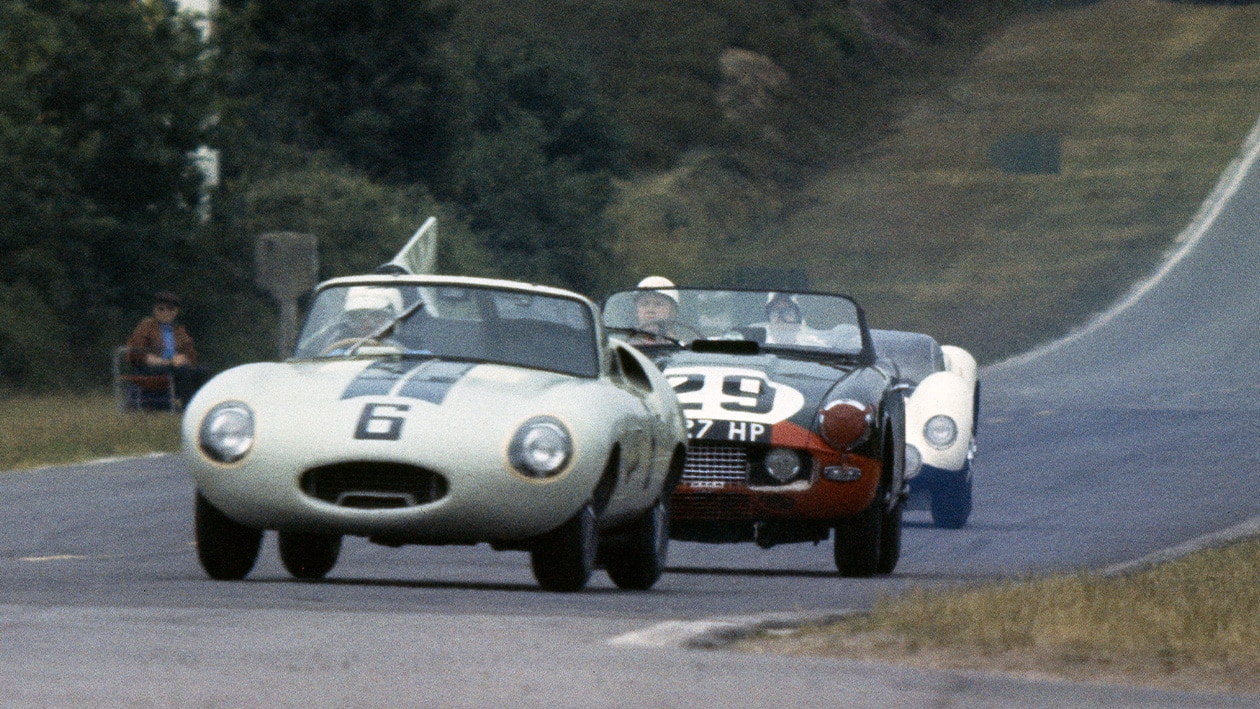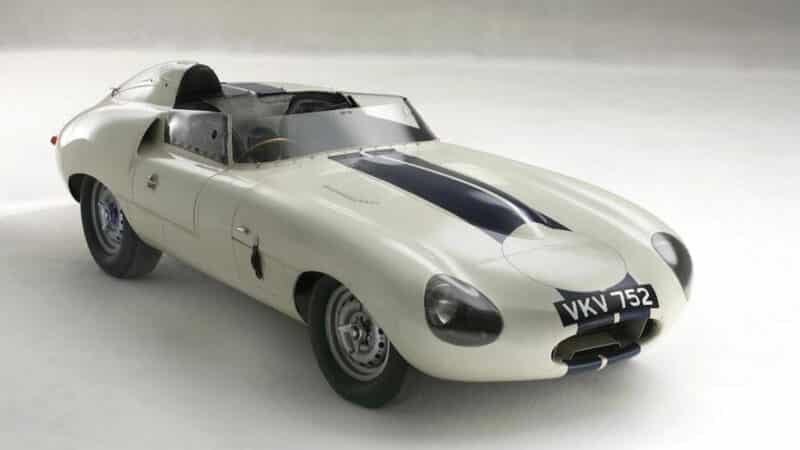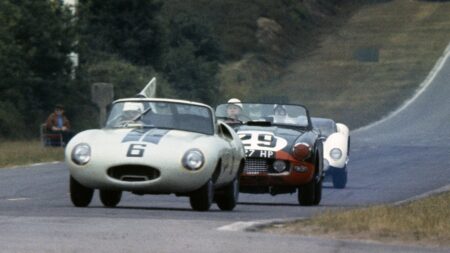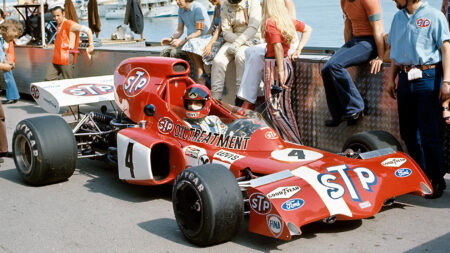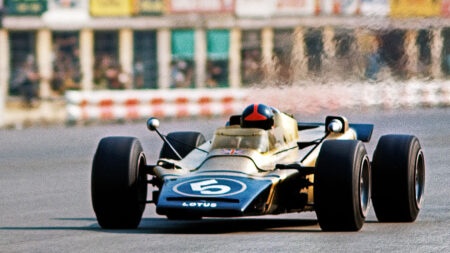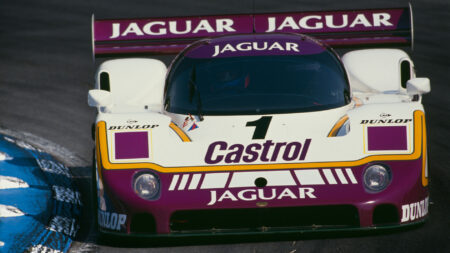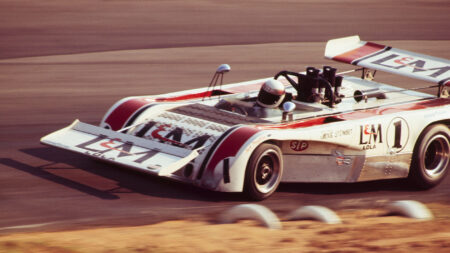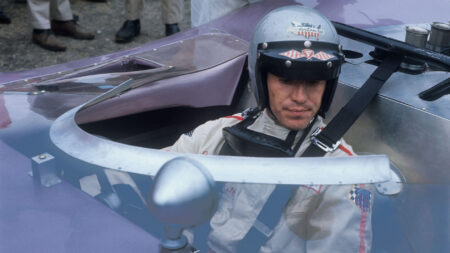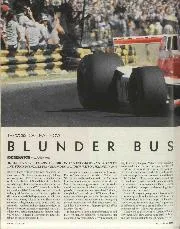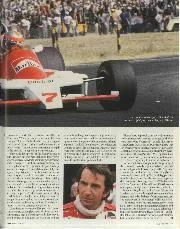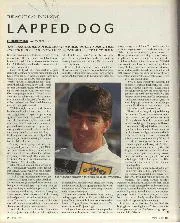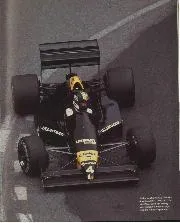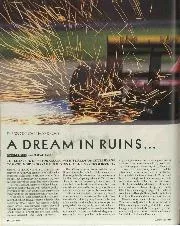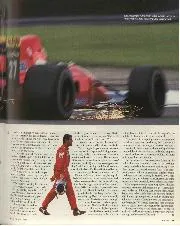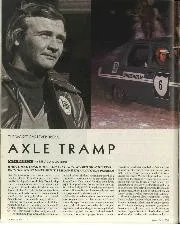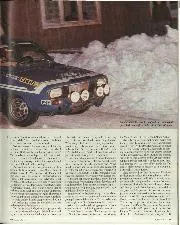“I also had a great respect for Walter Hangsen, who was half a generation ahead of me. He was probably the best driver on the East Coast, and later he was a mentor to Mark Donohue.”
Featuring Cunningham’s trademark blue stripes, the white car certainly looked the part. It attracted a lot of attention, not least because the only other Jag in the race was the ageing Ecurie Ecosse D-type.
“I thought the first C-type was fabulous at least the font half of it was really good. The D-type is still an all-time great, and with the E-type they were continuing the tradition of having a really nice aero look to it. I thought it was great.”
Dan’s opinion changed somewhat when he got the Jag up to speed during practice.
“For whatever reason, they insisted on running it with toe-out in the rear wheels. It was exceedingly difficult, especially if you were in a passing move or got into any kind of side wind configuration. It felt that if you went past and a guy was just standing there at the side of the road, and he blew as if he was trying to blow out all the candles on his birthday cake at once, he’d put the thing into a speed wobble! It was really bad.
“I tried to respectfully complain about it, and I tried to get some assistance from Walter Hangsen but he was an old Jaguar enthusiast from way back, and refused to complain about it.”
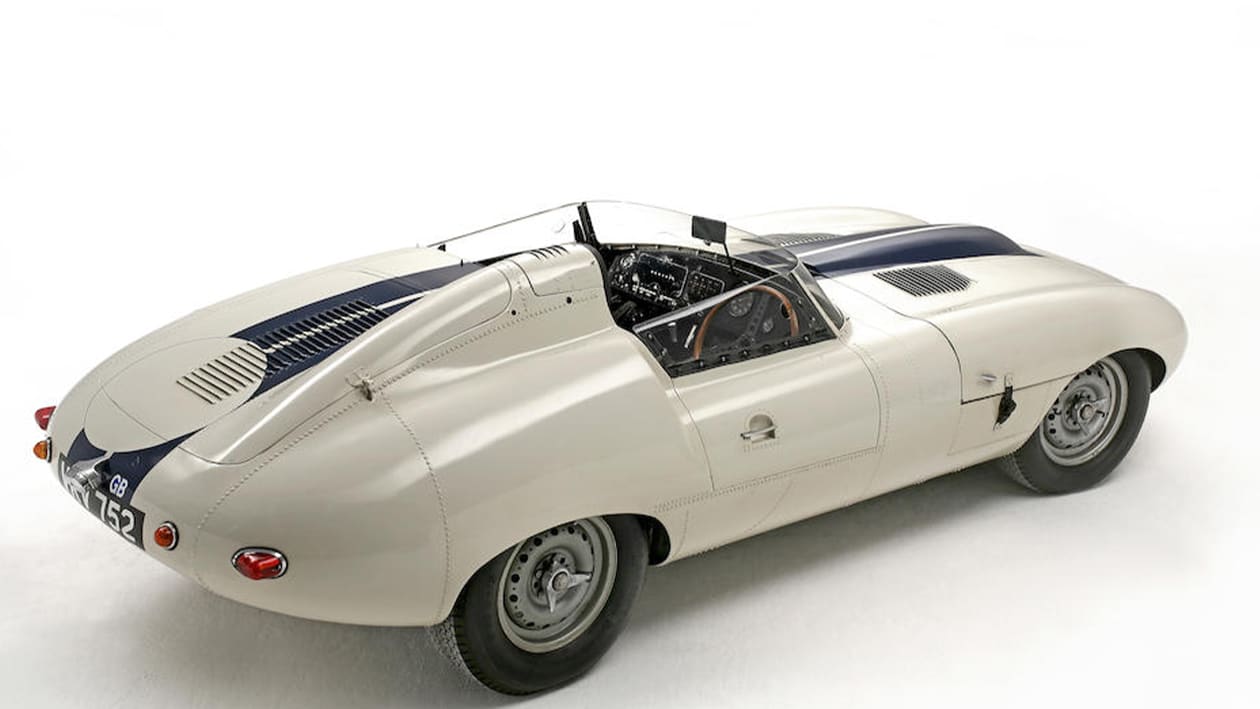
The 40-year old Hangsen’s reluctance to rock the boat was perhaps explained by the fact that the slippery 3-litre car flew down the straights, and in his hands was actually quickest on Wednesday.
“So I sort of felt like an idiot complaining, but there was no doubt in my mind it was pretty bad. It was down to Jaguar, not Cunningham. Apparently they’d run the car at MIRA and that surprised me, because it certainly would not have felt any better on an oval! I never did understand why they did it.
“Anyway, I kept soldiering on in practice. In those days it was extremely difficult to go all the way from Arnage to White House flat on the floor. And on the very first occasion that I finally got there flat around the turn that arrives before getting to White House, there was a curtain of rain that looked like you could step in and out of it. You could barely see 50 yards.
